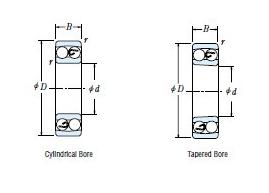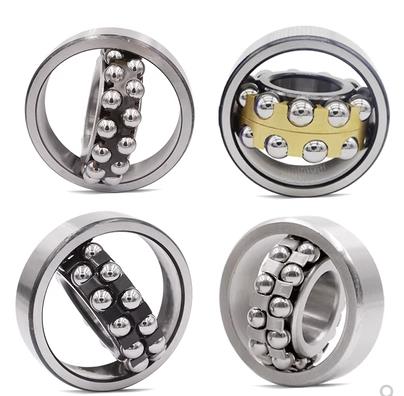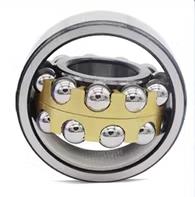Spherical ball bearing 2206M
1. Adapt to alignment error
Spherical ball bearing can adapt to alignment error in equipment better. It can still ensure smooth operation under the operating conditions of large shaking.
2. Excellent high-speed performance
Spherical ball bearings have very low starting and running friction. It can meet the requirements of high acceleration operation performance.
3. Minimum maintenance requirements
Spherical ball bearings only need a small amount of lubricant to achieve efficient operation. Lower friction effectively prolongs the time interval for re-lubrication.
4. Low noise and vibration levels
The smooth raceway adopted by spherical ball bearing can greatly reduce the vibration and noise level of the bearing during operation.
Spherical ball bearing also named self-aligning ball bearing, spherical ball bearings have two rows of balls, a common sphered raceway in the outer ring and two deep uninterrupted raceway grooves in the inner ring. They are insensitive to angular misalignment of the shaft relative to the housing, which can be caused, for example, by shaft deflection.
Accommodate static and dynamic misalignment
Excellent high-speed performance
Excellent light load performance
Low friction
2206M Spherical ball bearing, It's brass cage bearing.
Dimension
30 mm x 62 mm x 20 mm
Weight: 0.26kg

Spherical ball bearing 2206, we have brass cage, rubber cage, steel cage available.

Temperature limits
The permissible operating temperature for self-aligning ball bearings can be limited by:
the dimensional stability of the bearing rings and balls
the cage
the seals
Bearing rings and balls
The bearings are heat stabilized up to 120 °C (250 °F).
Cages
Steel or brass cages can be used at the same operating temperatures as the bearing rings and balls.
Seals
The permissible operating temperature for NBR seals is –40 to +100 °C (–40 to +210 °F). Temperatures up to 120 °C (250 °F) can be tolerated for brief periods.
Typically, temperature peaks are at the seal lip.






